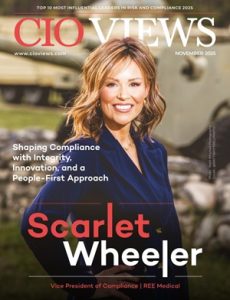Public Relations (PR) and Communication are crucial for any organization, regardless of its size, sector or location. They help organizations to build and maintain relationships with various stakeholders, including customers, employees, investors, partners, media, government agencies and the general public.
In today’s digital age, PR and communication also involve leveraging various online platforms and technologies to reach a wider audience and engage with them in real-time. From social media to email marketing to influencer outreach, there are many innovative ways to amplify an organization’s message and strengthen its brand identity. Public Relations (PR) and communication play a crucial role in the success of any organization.
Here are some of the key reasons why?
Building Brand Image: a well-crafted PR and communication narrative can help to create a sense of identity and purpose for an organization. By telling a compelling story about its history, mission, values and culture, an organization can build emotional connections with its stakeholders and inspire them to become loyal advocates.
Furthermore, PR and communication can be used to shape the narrative around specific products, services or initiatives. By creating a clear and consistent message that highlights the unique features and benefits of a product or service, an organization can increase its appeal to customers and drive sales.
Crisis Management: Crises can strike an organization at any time, and if not handled properly, they can cause irreparable damage to its reputation and relationships with stakeholders. This is where PR and communication can play a critical role in mitigating risks and managing crises effectively.
A well-crafted crisis communication plan can help an organization to respond quickly and appropriately to crises, by providing a clear framework for decision-making and communication. This plan should include key stakeholders and communication channels, as well as a process for gathering and verifying information.
During a crisis, PR and communication professionals can act as a bridge between the organization and its stakeholders, providing accurate and timely information, addressing concerns and questions, and demonstrating empathy and concern. This can help to establish trust and credibility with stakeholders and prevent misinformation and rumors from spreading.
Stakeholder Engagement: Effective communication is a crucial component of stakeholder engagement and relationship building. It involves not only providing information but also actively listening to feedback, addressing concerns and needs, and demonstrating empathy and understanding.
For customers, effective communication can help to build trust and loyalty by providing clear and accurate information about products, services, and promotions. This can include product descriptions, pricing, availability, and delivery information, as well as customer support and feedback channels.
For employees, effective communication can help to create a sense of shared purpose and commitment by keeping them informed about company goals, performance, and opportunities for growth and development. This can include regular updates from senior management, team meetings, and training sessions.
For investors, effective communication can help to build confidence and trust in the organization’s performance and future prospects by providing regular financial and operational updates, as well as insights into the company’s strategy and vision. This can include quarterly reports, investor presentations, and analyst briefings.
For the media, effective communication can help to shape the narrative around the organization and its offerings by providing accurate and timely information, responding to media queries and concerns, and building relationships with journalists and influencers. This can include press releases, media interviews, and social media engagement.
Effective communication is essential to stakeholder engagement and relationship building, as it helps to build trust, foster loyalty and commitment, and create a sense of shared purpose and understanding. By prioritizing effective communication, organizations can establish themselves as trusted and respected leaders in their respective industries and communities.
Building Credibility: PR and communication are powerful tools for building credibility and demonstrating an organization’s expertise, innovation, and commitment to quality. By showcasing its strengths and unique value proposition, an organization can establish itself as a trusted and respected leader in its industry or field.
One way that PR and communication can help to build credibility is by leveraging third-party endorsements and industry recognition. This can include awards, certifications, and positive media coverage that highlight the organization’s achievements and expertise. By sharing these endorsements with stakeholders, an organization can demonstrate its credibility and gain the trust of its audience.
Another way that PR and communication can help to build credibility is by providing thought leadership and insights on industry trends and issues. By sharing its expertise and insights on relevant topics, an organization can position itself as a trusted authority and build a reputation for innovation and forward-thinking.
PR and communication can also help to build credibility by providing evidence of the organization’s commitment to quality and customer satisfaction. This can include testimonials, case studies, and other forms of social proof that demonstrate the value and effectiveness of its products or services.
In current times, PR and communication are integral to an organization’s success, as they help to build and maintain strong relationships with stakeholders, establish trust and credibility, and create a compelling narrative that differentiates the organization from its competitors.





